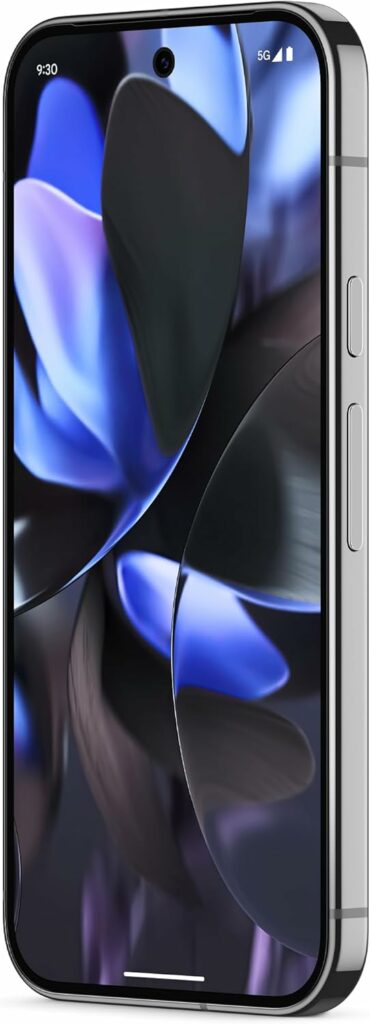Building Meaningful Connections from Your Digital Cave to Feel Good and Happy
While technology offers unprecedented reach, it also brings challenges. Dr Marina Nani invites us to explore the possibilities of building meaningful connections, with positive intentions and kindness, from our personal digital caves.

While connecting my new phone today, I couldn’t help but reflect on our digital caves. Thousands of years ago, humans sought connection and self-expression in the most primitive of environments — caves. These early humans left behind symbolic paintings on cave walls, communicating their stories, fears, victories and hopes. These drawings, dating back as far as 40,000 years, represent our ancestors’ desire to leave a mark, to share their experiences with others and to establish a sense of connection, even in isolation.

The digital age has brought about an unprecedented level of connectivity which presents unique challenges, especially when it comes to forming meaningful relationships. Drawing from personal stories, global statistics and scientific evidence,
I invite you to reflect on the value of meaningful connections and the profound impact on mental health.
In the last decade, I’ve focused on interviewing thousands of people from various walks of life, different age groups and diverse cultures across continents, both on live stage and online. Every story paints a fascinating, multifaceted picture of how humans are using the digital world to build connections.
Your digital cave
From the early days of social media, people have questioned whether digital connections can match the depth and quality of face-to-face interactions. Yet, as technology evolved, the question has shifted: how can digital spaces be used to cultivate deep, meaningful connections despite their inherent limitations?
In speaking with my guests across the globe — from a middle-aged entrepreneur in Africa to young university students in Tokyo — one thing became clear: meaningful connections can thrive in digital spaces. But they require intention, clarity and a willingness to navigate the limitations that come with the screen between us.
My conversation with Alicia, a 32-year-old teacher in Sweden who found herself socially isolated, but she developed a deep connection with her own identity while we helped her write her book, from the very bedroom where she was domestically abused for years. “We were all strangers at first, but the distance made us more intentional about our conversations. I shared my struggles and initial interview and journaling, turned into writing my book, which was a profound healing experience through a very difficult time. I deeply value our connection to this day” she told me.
Alicia’s experience is far from unique. A study conducted by the Pew Research Center in 2021 found that 72% of adults said they maintained or strengthened their social connections through digital communication during the pandemic. However, the transition to the digital sphere isn’t without its pitfalls. There’s growing evidence of the toll that constant digital interaction can take on mental health.
It’s important to recognize both sides of the coin when it comes to digital relationships. On one hand, digital platforms can build strong connections, reduce loneliness and bridge cultural divides. On the other hand, they can also exacerbate feelings of isolation, anxiety and depression.
In a conversation with Keenan, a 25-year-old software developer from Johannesburg, he reflected on the darker side of his digital social life. “I was always connected to people online, but it felt like I wasn’t really ‘there’ in any of the relationships. It was like I was floating through conversations without actually engaging deeply. The more I tried to connect, the more isolated I felt.”
Keenan’s experience is echoed in recent research. A 2020 study from the Journal of Social and Clinical Psychology revealed that individuals who spent more than two hours per day on social media were significantly more likely to experience feelings of social isolation, depression and anxiety. The passive nature of many online interactions—such as scrolling through feeds without genuine engagement—can leave us feeling disconnected despite the apparent presence of connection.
Not all digital interactions are created equal. The same study found that active participation, such as video calls or meaningful conversations via messaging platforms, was linked to positive mental health outcomes. This highlights the importance of how we engage online, rather than simply how often. I would say that digital connections are simply what we make of it.Across the various interviews conducted, it became apparent that the cultural context in which we engage with digital spaces has a profound impact on how meaningful those interactions are. For instance, in societies like India or Japan, where community and social harmony are emphasized, digital platforms often serve as extensions of family networks.
I spoke with Priya, a 41-year-old software engineer in Bangalore, who shared how WhatsApp group chats with her extended family helped her stay grounded through the isolation of remote work. “We’re a tight-knit family and during the pandemic, our WhatsApp group was buzzing 24/7 with messages. I realized that, even if I couldn’t be with my family physically, the digital conversations we had kept us connected on a deep emotional level.”
In contrast, in western societies like the United States or the UK, digital connections are often pursued with a greater emphasis on personal interest groups or niche communities.
My conversation with Max, a 19-year-old university student from Los Angeles, revealed a different dynamic. “I felt more connected to people with shared interests online than I did with my family or close friends. I found a community of gamers online and while we never met in person, our chats about life and struggles helped me through some tough times.”
These differing perspectives demonstrate how the digital world can be adapted to fit cultural needs and values. In Asian cultures, digital platforms often complement existing social structures, while in western cultures, they can create new, often more personalized, forms of connections.
Generational differences also play a significant role in how people build meaningful connections digitally. Younger generations are digital natives who often feel more comfortable forming and maintaining relationships online. Older generations, however, tend to view digital communication as a supplement to, rather than a replacement for, face-to-face interaction.
When I spoke with Marta, a 67-year-old retiree from Italy, she explained how she adapted to the digital world to stay connected with her grandchildren, who lived in another continent. “At first, I was hesitant to use technology, but my grandchildren introduced me to video calls. Now, we talk almost every day. I may not be there in person, but I feel a deep connection with them.”
In contrast, Sarah, a 23-year-old student from London, view digital communication as their primary mode of interaction. “Most of my friendships started online, through social media or forums. I’ve met some of my best friends through these platforms and even though we’ve never met in person, the bond we share feels real.”
These generational insights reveal the flexibility and adaptability of digital communication. For older generations, technology can bridge physical distance and keep family ties intact, while for younger generations, it’s a tool for forming entirely new social networks.
Building meaningful connections to feel good and happy
Despite all challenges you might faced, every digital platforms could foster deep, meaningful connections. As my interviews revealed, the quality of these connections largely depends on how we engage with other people and ourselves on these platforms.
A 2022 study published in Nature Communications offers insight into how we can cultivate meaningful relationships online. The research found that meaningful digital interactions — those characterized by vulnerability, mutual support and active engagement — led to improved mental health outcomes. Conversely, superficial or passive digital interactions were linked to feelings of loneliness and dissatisfaction.
This aligns with the advice I gathered from my interviews: focus on quality over quantity, prioritize active engagement over passive consumption, and be intentional in your digital interactions.
From my digital cave to yours
Your digital cave, with all its algorithms and distractions, can feel isolating at times. But it also holds immense potential for connection. Whether you’re bonding with family across the world, forming communities based on shared passions, or navigating complex social structures in a digital-first world, meaningful connections are possible — if we approach them with clarity and positive intention.
While the tools from pre-historic caves have evolved from ochre and charcoal to touchscreens and keyboards, the core human need for connection remains unchanged. What has transformed dramatically is the medium — from physical, tangible marks on cave walls to digital representations on the screens of devices we carry with us everywhere.
Instead of hunters drawing animals or tribes illustrating rituals, we now share memes, photographs, and videos. Social media platforms like Instagram, Twitter, and TikTok have become the new cave walls where millions of people etch their lives, thoughts, and experiences. But is there truly a difference between the cave drawings of the past and the digital communications of today? In essence, both serve the same purpose: they are an expression of a natural desire to be seen, to be heard, understood and remembered.
While the motivations for connection and self-expression remain essential to human nature, there are several key changes have occurred since we left the caves and created the digital caves of the present:
Ancient cave drawings were inherently local. The stories and messages conveyed were intended for a small group — the tribe or immediate family. Today, a post or comment can reach millions of people worldwide in seconds. The digital cave walls are no longer constrained by geography, enabling a more diverse and expansive form of communication.
Cave drawings, once etched, stood the test of time. Some of them remain visible to this day, tens of thousands of years later. In contrast, much of the content shared online is ephemeral. Stories disappear in 24 hours, posts get buried under new updates, and the digital landscape is in constant flux. This ephemerality can contribute to feelings of impermanence and anxiety as users strive to maintain relevance and visibility in an ever-changing digital world.
Whereas cave drawings were rare and deeply intentional, today’s digital communications are marked by quantity over quality. The sheer volume of content — billions of posts shared every day — creates a sense of saturation. The emphasis is often on producing frequent updates, leading to more superficial engagements as opposed to the deep, intentional communication that characterized our ancestors’ markings.
While early humans may have faced isolation and physical threats, their social interactions were tangible, often direct, and more grounded in real-life experiences. In contrast, modern digital interactions are frequently mediated by algorithms, filters, and an overabundance of content. Passive scrolling and superficial engagement have been linked to feelings of loneliness, anxiety and even depression. A 2023 study published in JAMA Psychiatry found that prolonged passive social media use was associated with a 13% higher risk of developing symptoms of depression among teenagers and young adults.
One of the most fascinating developments in recent years is the trend of people seeking to live off-grid while remaining digitally active. We often dream of a quiet retreat and some of us dare to move into remote, rural areas, living sustainably and independently of traditional infrastructure, yet they continue to stay connected to the online world.
Sierra and Dan, a couple from the Pacific Northwest whom I had the chance to interview in 2022. They live in a self-sustaining cabin deep in the forests of Canada, relying on solar power, rainwater collection and home-grown food. However, they maintain an active presence on social media, where they document their off-grid lifestyle, connecting with over 1,000,000 followers. “For us, it’s about balance” Sierra explained. “We want to live in a way that’s more in tune with nature, but we also recognize the power of technology to create community and share ideas.”
We all have the unfair advantage of taking our personal cave in our travels, wherever we go and still engage with the larger global society.
Ultimately, the question isn’t whether digital connections can be meaningful, but how we can make them feel good and happy every day. By balancing digital engagement with emotional regulation and mindful communication, we can use technology not as a replacement for interactions, but as a powerful tool for deepening our relationships in an increasingly digital age. The key is to be human and kind with total strangers, including yourself, even from behind the screen.
Do you want to share your story and inspire our readers ? Know that YOUR EXPERTISE is paving the way for a fairer, happier society.




